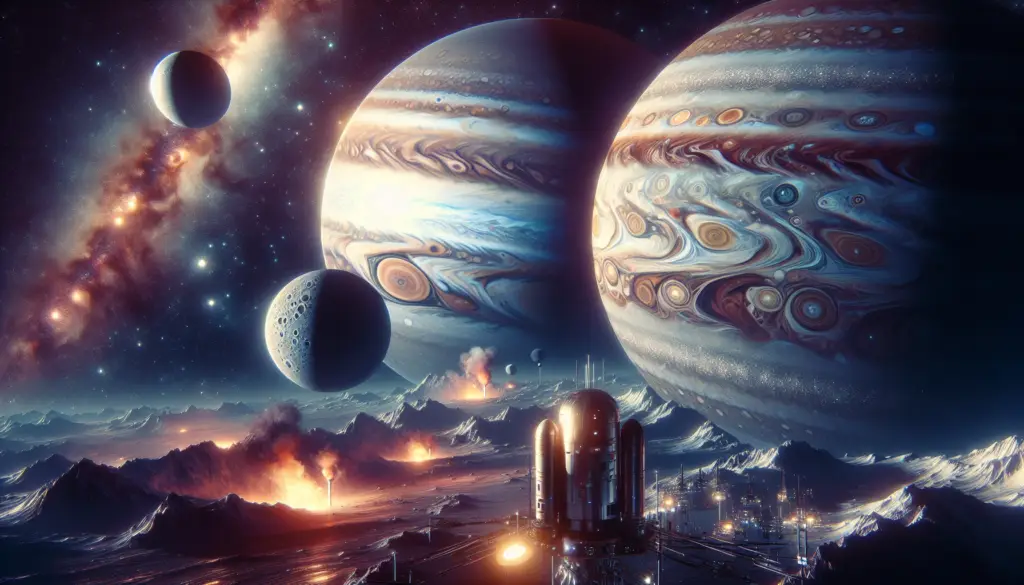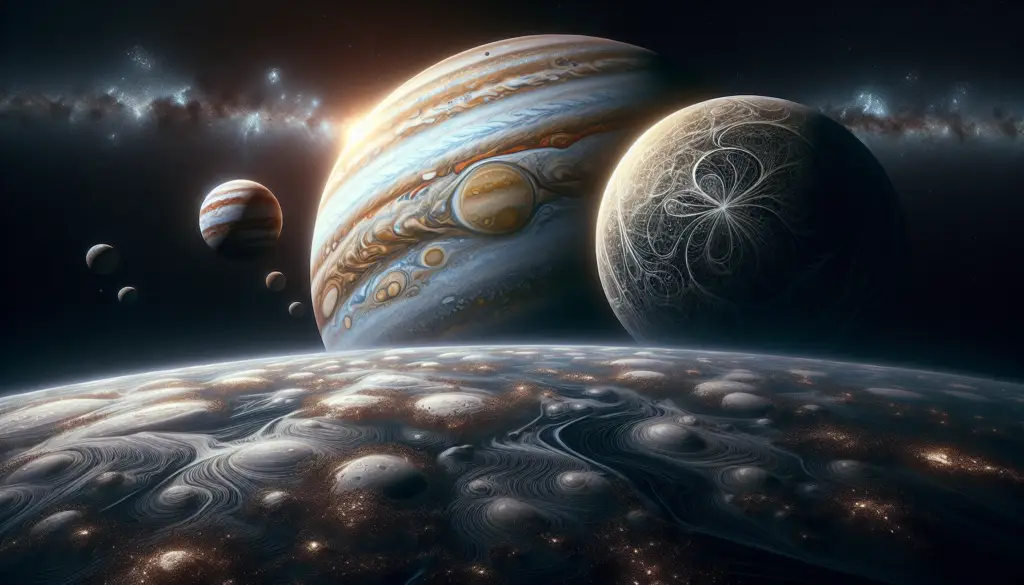Exploring Europa and Io: The Captivating Moons of Jupiter
Uncovering the Mysteries of Europa and Io
Among the many marvels that the solar system has to offer, the moons Europa and Io, orbiting the giant planet Jupiter, stand out as true jewels of cosmic wonder. Europa and Io each offer unique characteristics, with Europa’s icy world and potential for a vast subsurface ocean captivating the imagination of scientists and space enthusiasts alike. As we delve deeper into the exploration of these enigmatic moons, we uncover a wealth of fascinating insights that shed light on the remarkable diversity of our solar system.
The Tantalizing Prospect of a Subsurface Ocean on Europa and Io
One of the most intriguing aspects of Europa is the strong evidence suggesting the existence of a vast, global subsurface ocean. Beneath the moon’s icy exterior, this liquid water reservoir is believed to be in contact with a rocky seafloor, potentially creating a habitable environment for microbial life. The presence of this subsurface ocean is a tantalizing prospect, as it raises the possibility of discovering extraterrestrial life within our own solar system.
Observations from various spacecraft, including the Galileo mission, have revealed a complex network of cracks and ridges on Europa’s surface, indicating that the ice shell is in constant motion. This dynamic environment is thought to be driven by the tidal forces exerted by Jupiter, which flexes and deforms the moon’s interior, generating heat and maintaining the subsurface ocean in a liquid state.
Our Other Related Article : Jupiter: Exploring Its Wonders and Moon Europa
The Europa Clipper Mission: Unlocking the Secrets of a Potentially Habitable World
To further our understanding of Europa and its potential for habitability, NASA is currently developing the Europa Clipper mission, a groundbreaking endeavor that promises to shed new light on this enigmatic moon. Scheduled for launch in the 2020s, the Europa Clipper will embark on a series of close flybys, using a suite of advanced instruments to map the moon’s surface, investigate its subsurface structure, and analyze the composition of its icy shell and potential plumes.

One of the key objectives of the Europa Clipper mission is to determine the thickness and composition of the ice shell, as well as the depth and nature of the subsurface ocean. By studying the moon’s geology, geochemistry, and potential signs of active processes, the mission aims to assess Europa’s habitability and identify potential landing sites for future exploration.
Exploring the Volcanic Moon of Io
While Europa captivates us with the prospect of a subsurface ocean, another of Jupiter’s moons, Io, presents a strikingly different and equally fascinating landscape. Io is the most volcanically active body in the solar system, with a surface that is constantly being reshaped by its fiery eruptions.
Tidal forces from Jupiter’s immense gravitational pull are the driving force behind Io’s intense volcanic activity. As the moon orbits Jupiter, the planet’s gravity causes Io’s interior to flex and deform, generating immense heat that fuels its volcanic eruptions. These eruptions spew sulfur-rich lava onto the surface, creating a dynamic and ever-changing landscape that is unlike anything else in the solar system.
The Volcanic Wonders of Io
Io’s volcanic features are truly awe-inspiring, with towering mountains, vast lava lakes, and massive plumes of sulfurous gas erupting from its surface. The moon’s volcanoes can reach heights of up to 12 miles (19 kilometers), dwarfing even the tallest mountains on Earth. These volcanic eruptions not only shape the surface of Io but also contribute to the moon’s tenuous atmosphere and the vast torus of charged particles that surrounds Jupiter.
The study of Io’s volcanic activity provides valuable insights into the internal structure and composition of the moon, as well as the processes that drive such intense geological activity. By understanding Io, we can gain a better understanding of the formation and evolution of our solar system, as well as the potential for volcanic activity on other planetary bodies.
Unlocking the Secrets of the Jupiter System
The exploration of Europa and Io, two of Jupiter’s most captivating moons, is a testament to the boundless curiosity and scientific ingenuity of humanity. As we continue to unravel the mysteries of these extraordinary worlds, we are not only expanding our knowledge of the solar system but also opening up new avenues for the search for extraterrestrial life.
The Europa Clipper mission, with its advanced instruments and close-up observations, promises to revolutionize our understanding of this potentially habitable moon. Meanwhile, the ongoing study of Io’s volcanic wonders offers a glimpse into the dynamic geological processes that shape the surfaces of planetary bodies throughout the cosmos.
As we delve deeper into the exploration of the Jupiter system, we are poised to make groundbreaking discoveries that will not only captivate the scientific community but also inspire the public’s imagination. The journey of discovery continues, and the secrets of these enigmatic moons await us, ready to be unlocked and shared with the world.

